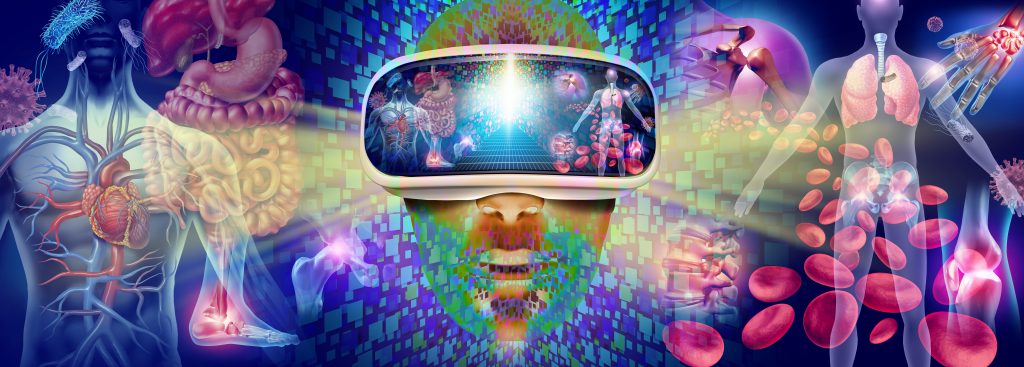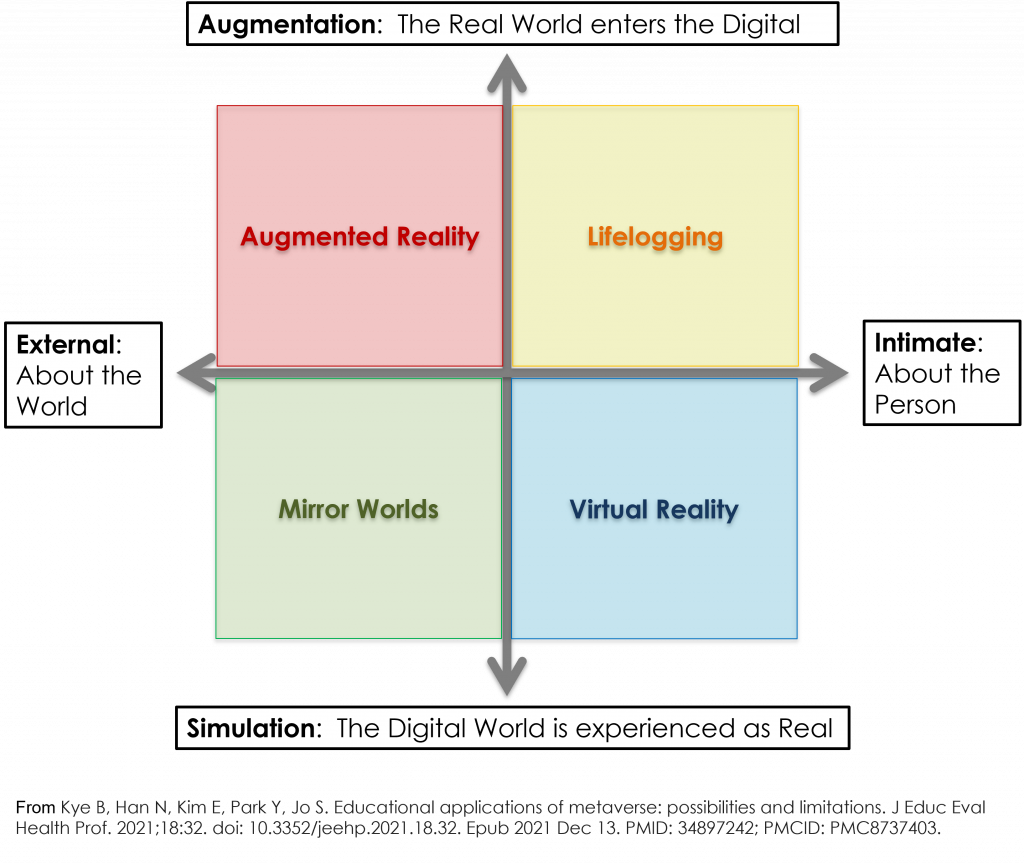What is the Metaverse? How will it evolve in healthcare education? Todd Chang and Tom Dolby share their point of view
The Metaverse is a difficult concept to explain, especially to people who are not in the VR workspace. And even the best programmers, venture capitalists, and simulation experts still disagree about what the Metaverse actually is, and especially how it affects healthcare. Ok: what is the Metaverse?
The definition of Metaverse is evolving rapidly, as new technologies, companies, and policies begin to enter the Metaverse space. Just like the definition of Virtual Reality has evolved since 2015, so too, will the Metaverse. Therefore, what we discuss here about the Metaverse may not be true in 2 years. The Metaverse is a universe in which the digital/virtual world and the real world are blended. It puts together – as seamlessly as possible – your social media, your virtual world, your real world, and your digital communities all in one arena. And in healthcare, this means using technologies that connect your real body and physiology to the virtual world. Just as you have a digital persona on social media that is similar – or maybe very different – to your real self, the Metaverse seeks to blend the two.

Kye et al. has an excellent conceptual model for how the Metaverse applies to healthcare and medical education (Kye 2021). The Metaverse, per Kye et al’s framework, has 4 potential domains, all along a continuum of two scales. The first scale is about closeness and intimacy. There are elements of the world that are quite personal or intimate. Think about personal health or even revealing elements of your own mental health. In contrast, there are elements in this scale that are extremely global or population-based, such as the digital environment or public community health concerns. The second scale is about how the digital and real worlds relate to one another. On one hand, you can have Augmentation. This is pushing real world information into the digital world. A simple example is a social media post – a video of a real event moves into the digital world for people to see. The real world can be examined in an Augmented way, in which technologies provide additional information that the human senses cannot detect, such as in Augmented Reality. Alternatively, the digital world can come into the real world, such as in Virtual Reality, where a manufactured world is experienced in a very real manner – one can see, hear, and experience a simulated world, and it feels very real. The Metaverse encompasses all of these technologies, where the real world is brought to the digital side, and the digital world is experienced in a near-authentic manner.

The Metaverse offers the opportunity of a persistent digital world for an organization, a place that can offer instant access and collaboration without physical boundaries. It can even be a 3D digital twin of a hospital if desired. Staff can meet, discuss and simulate from anywhere in the world. Opportunities emerge for remote and disadvantaged areas to access training in ways not previously possible. If done right, a shared digital immersive space has clear advantages over the friction of physical travel or video calls. There is a lot of potential, but the Metaverse is still very much in its infancy, and technology providers still have a long way to go in delivering to their ambition, let alone the specific needs of medical professionals. It also remains to be seen how much the healthcare sector will embrace this kind of technology, because it presents new ethical, security and legal considerations. It may present a similar adoption pathway to Virtual Reality itself, with interest, exploration and engagement seen at the individual level, leading to research projects and pilot studies, and eventually seeing uptake at the organization level.

We as simulationists, have an opportunity to get involved in how healthcare simulation integrates the Metaverse. For many of us, this means learning digital simulation methods, including serious games, VR and AR applications, and meeting talented engineers, programmers, and developers who have an interest in healthcare training. In our experience, the skillset for digital healthcare simulation within the Metaverse will only grow in importance and popularity.
READ ALSO








































